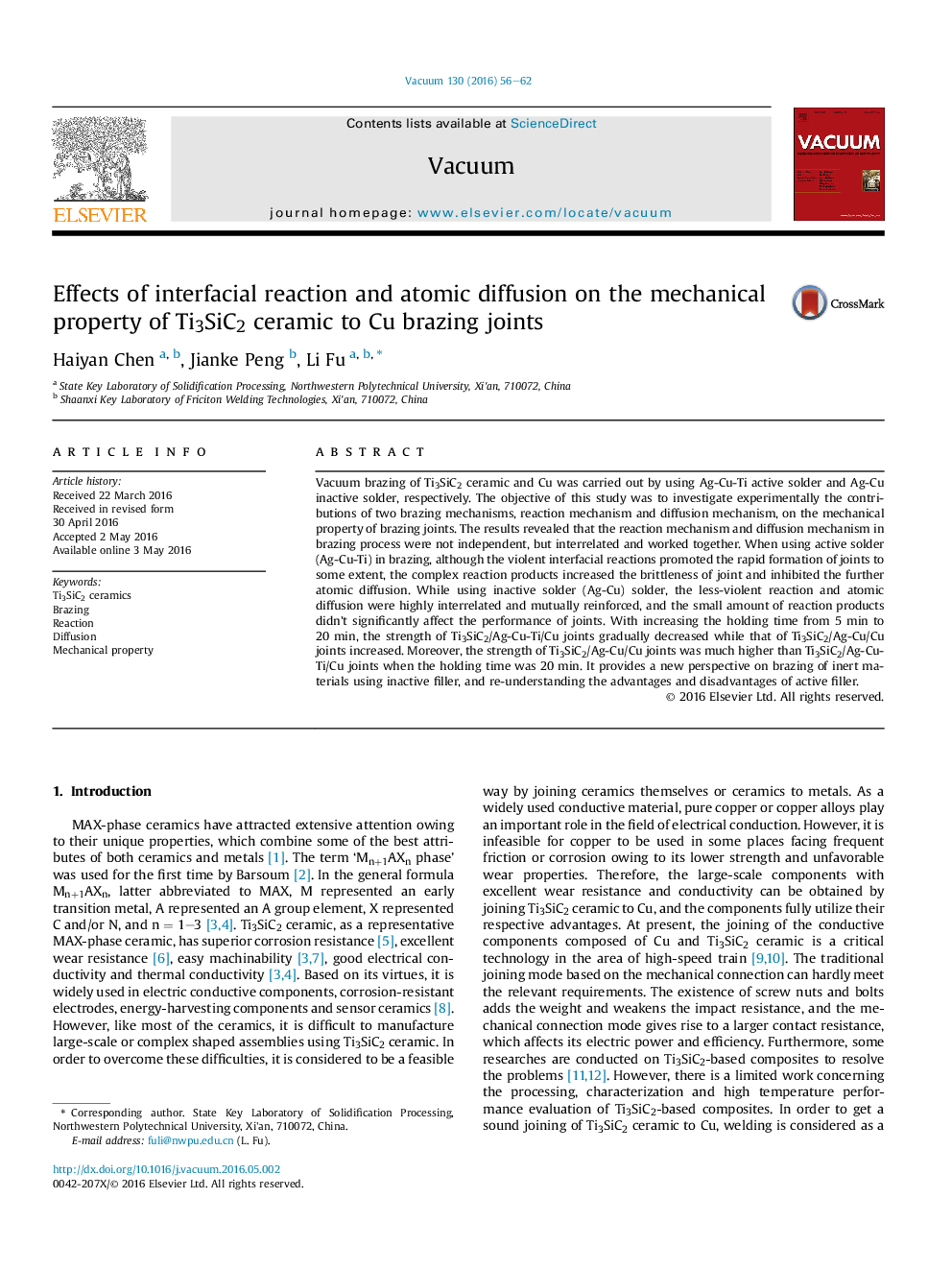| Article ID | Journal | Published Year | Pages | File Type |
|---|---|---|---|---|
| 8044857 | Vacuum | 2016 | 7 Pages |
Abstract
Vacuum brazing of Ti3SiC2 ceramic and Cu was carried out by using Ag-Cu-Ti active solder and Ag-Cu inactive solder, respectively. The objective of this study was to investigate experimentally the contributions of two brazing mechanisms, reaction mechanism and diffusion mechanism, on the mechanical property of brazing joints. The results revealed that the reaction mechanism and diffusion mechanism in brazing process were not independent, but interrelated and worked together. When using active solder (Ag-Cu-Ti) in brazing, although the violent interfacial reactions promoted the rapid formation of joints to some extent, the complex reaction products increased the brittleness of joint and inhibited the further atomic diffusion. While using inactive solder (Ag-Cu) solder, the less-violent reaction and atomic diffusion were highly interrelated and mutually reinforced, and the small amount of reaction products didn't significantly affect the performance of joints. With increasing the holding time from 5Â min to 20Â min, the strength of Ti3SiC2/Ag-Cu-Ti/Cu joints gradually decreased while that of Ti3SiC2/Ag-Cu/Cu joints increased. Moreover, the strength of Ti3SiC2/Ag-Cu/Cu joints was much higher than Ti3SiC2/Ag-Cu-Ti/Cu joints when the holding time was 20Â min. It provides a new perspective on brazing of inert materials using inactive filler, and re-understanding the advantages and disadvantages of active filler.
Related Topics
Physical Sciences and Engineering
Materials Science
Surfaces, Coatings and Films
Authors
Haiyan Chen, Jianke Peng, Li Fu,
